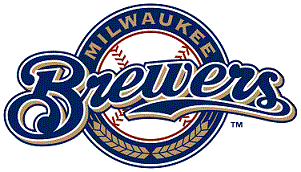Over my 48 years, I’ve done my fair share of travelling across these United States. I thought it would be an interesting experiment go look back at those trips to each of the 31 states I have visited (62% isn’t bad, is it?) and see if, and when, I may be returning. Working in alphabetical order, we wrap things up today with the 30th state to be added to the Union: Wisconsin.
State: Wisconsin
Joined the Union: 1848
Visits: 15
Over the years, I’ve made fifteen trips to the Badger State, first in 1993 and most recently in 2019, the majority revolving around sports.
I made my first trip to Wisconsin, and my only visit to County Stadium, with Scott and Joe for a White Sox/Brewers tilt on July 18, 1993. Back in the days before cell phones and GPS, we were left to our own devices as far as directions. I remember one of the signs for the highway saying it would take us to Madison, and, not wanting to go to Madison, Scott decided to get off the highway. Which put is somewhere in Milwaukee with no idea of how to get to the ballpark. Eventually we made it in time to see the White Sox pull off the victory thanks to a 2-run single by Bo Jackson in the 9th inning.
At some unknown point, I made a trip up to the woods of Wisconsin with my friend Mike, his father and brother, and Scott to clean up an old family cabin. I have no idea where we were or how long we were there, but it was certainly an experience.
My next trip came in April of 1995. When Michael Jordan returns to the NBA and every game in Chicago is a sellout, the next best thing is to take the long drive 90 miles to the north to see the Bulls battle the Bucks at the Bradley Center. Despite 33 points from Michael Jordan, Glenn Robinson led the Bucks to a 104-100 victory, scoring 36.
With the opening of their new ballpark in 2001, the Brewers drew me back to Milwaukee in May. In a pitching battle, the Cubs outlasted the Brewers 7-6 as closer Tom Gordon picked up his first save with the team.
I returned to Milwaukee in April of 2022, when Tina and I drove north to see The Kids In The Hall reunion show at the Riverside Theater.
My next three trips to Miller Park came in May of 2003 and July of 2004. On May 12, I saw the Cubs, behind home runs from Damian Miller, Moises Alou, and Troy O’Leary, beat the Brewers 11-5. The next July 5, Ben Sheets outdueled Matt Clement as the Brewers topped the Cubs 1-0. Three weeks later, the Brewers topped the Cubs once again, winning 6-3.
After nearly a decade away, I returned to Wisconsin in October of 2013 for Keith Longwell’s bachelor party. I travelled to the faraway land of Kewaunee, where the festivities included nights of video games and cards, nine holes of golf, where I mostly sat in the cart, and a trip out to some local bars, until we were asked to leave due to some drunken tomfoolery.
 In July of 2014, Danny, Michael, and I stopped in Madison on our way to Minneapolis to do some miniature golfing at Vitense Golfland. The highlights of the stop include Michael falling into one of the water hazards and plenty of picture opportunities, like with the Bucky Badger figure above. Continue reading →
In July of 2014, Danny, Michael, and I stopped in Madison on our way to Minneapolis to do some miniature golfing at Vitense Golfland. The highlights of the stop include Michael falling into one of the water hazards and plenty of picture opportunities, like with the Bucky Badger figure above. Continue reading →










